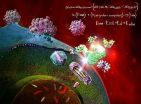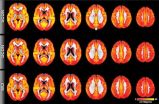(Press-News.org) The battle against AIDS cannot be won in the laboratory alone. To fight the potentially deadly virus that 34 million people are suffering from we need help from computers. Now research fron University of Southern Denmark turns computers into powerful allies in the battle.
Effective treatment of HIV-virus is a race against time: Many of the drugs that have been potent killers of HIV-virus, have today lost their power, because the virus has become resistant to them. As a result science must constantly develop new drugs that can attack the virus in new ways.
Now researchers from the University of Southern Denmark present a method to speed up the important development work up with an order of several hundred percent.
It now takes not years, but months or even only weeks to find new compounds that have the potential to become a new HIV drug. Finding suitable compounds that can specifically inhibit the HIV virus, is crucial in AIDS research, explains postdoc Vasantanathan Poongavanam from Department of Physics, Chemistry and Pharmacy, University of Southern Denmark:
"HIV is a retrovirus that contains enzymes which make it able to copy itself with the help of host genetic material and thus reproduce. If you can block these enzymes' ability to replicate itself, the virus cannot reproduce."
The needle in the haystack
An almost infinite number of different substances can be synthetized in a laboratory. Some of them may prove to inhibit HIV-virus's reproduction, but finding them is like finding a needle in a haystack.
"It takes enormous amounts of time and resources, to go through millions and millions of compounds. With the techniques used today, it may take years to carry out a screening of possible compounds".
In addition, it takes time to turn an effective compound into a safe pharmaceutical agent that can get on the market.
"Today, it generally takes nearly 14 years from the time you find a drug candidate to get it on the market. Anything that can shorten that time is an important improvement", says Vasanthanathan Poongavanam.
Until now, researchers have been hampered by slow computers and inaccurate prediction models when they ask computers to identify compounds that may be effective against HIV. Now the SDU researchers have managed to develop an effective model at a time when significantly more powerful computers have become available.
"Our work shows that computer based predictions are a extremely fast, accurate and promising methodology in the drug discovery projects", says Vasanthanathan Poongavanam.
14 new compounds found
With the new methods based on quantum mechanics and molecular mechanics, Vasanthanathan Poongavanam and his colleague, Jacob Kongsted, screened half a million compounds and found 25 that were interesting to investigate further. These 25 were tested in a conventional laboratory experiment, and 14 of them were found to inhibit HIV virus's ability to reproduce.
"It took us only a few weeks to find these 14 very interesting compounds, whereas before it would have taken years", explains Vasanthanathan Poongavanam.
The 14 compounds have now been taken over by Italian researchers who continue working with them at the University of Cagliari. The next step is to carry out advanced experiments on these compounds. If they are positive, the compounds may go on the market as a drug against HIV.
Illustration HIV virus (big purple balls) are entering a host cell. Once they have entered, they deliver their cargo of viral RNA (purple capsule looking container). The container also carries enzymes needed for the virus to copy itself, and the goal is to inhibit these enzymes so that the virus no longer can copy itself.
INFORMATION:
The description of the new method are published in the journals Integrative Biology and Plos One.
Ref: Binding free energy based structural dynamics analysis of HIV-1 RT RNase H-inhibitor complexes. Vasanthanathan Poongavanam, Jógvan Haugaard Magnus Olsen, Jacob Kongsted. DOI: 10.1039 / C4IB00111G.
Inhibitor Ranking Through QM based Chelation Calculations for Virtual Screening of HIV-1 RNase H inhibition, Vasanthanathan Poongavanam, Casper Steinmann, Jacob Kongsted, PLoS ONE 9(6): e98659. doi:10.1371/journal.pone.0098659
Contact Postdoc Vasanthanathan, nathan@sdu.dk. Tel: +45 65502570. Mobile: +45 23377705.
Researchers turn computers into powerful allies in the fight against AIDS
2014-10-07
ELSE PRESS RELEASES FROM THIS DATE:
Easy recipe to make bone and cartilage
2014-10-07
Scientists at The University of Texas Health Science Center at Houston (UTHealth), Monash University and RIKEN Centre for Developmental Biology have used a combination of small molecules to generate mouse cells that can form bone and cartilage. This new method is easily scalable, and hence is a promising approach for the repair of human bone and cartilage defects. The research has just been published at http://dev.biologists.org/ in the scientific journal Development.
Current strategies to regenerate bone and cartilage use adult stem cells that are committed to forming ...
A new pathway discovered regulating autoimmune diseases
2014-10-07
Boston, MA – The main function of the immune system is to protect against diseases and infections. For unknown reasons our immune system attacks healthy cells, tissues and organs in a process called autoimmunity, which can result in diseases such as multiple sclerosis, type 1 diabetes, lupus or rheumatoid arthritis. There are currently no existing cures for these diseases.
Now, in a new study by researchers at Brigham and Women's Hospital (BWH), a potential treatment maybe on the horizon. Researchers found that NAD+, a natural molecule found in living cells, plants ...
New genetic variants associated with coffee drinking
2014-10-07
Boston, MA — A new, large-scale study has identified six new genetic variants associated with habitual coffee drinking. The genome-wide meta-analysis, led by Harvard School of Public Health and Brigham and Women's Hospital researchers, helps explain why a given amount of coffee or caffeine has different effects on different people and provides a genetic basis for future research exploring the links between coffee and health.
"Coffee and caffeine have been linked to beneficial and adverse health effects. Our findings may allow us to identify subgroups of people most ...
MRI technique detects evidence of cognitive decline before symptoms appear
2014-10-07
OAK BROOK, Ill. – A magnetic resonance imaging (MRI) technique can detect signs of cognitive decline in the brain even before symptoms appear, according to a new study published online in the journal Radiology. The technique has the potential to serve as a biomarker in very early diagnosis of preclinical dementia.
The World Health Organization estimates that dementia affects more than 35 million people worldwide, a number expected to more than double by 2030. Problems in the brain related to dementia, such as reduced blood flow, might be present for years but are ...
Rural hospitals replicate experiences of big city stroke care
2014-10-07
A new model for stroke care is being studied in rural Alberta to reduce inequities in health across communities. This model, presented at the Canadian Stroke Congress, shows how hospitals in rural areas can mimic the type of care that's often only available in larger centres.
In geographically diverse Canada, stroke care can seem like tale of two cities – or more like a city and a small town. The ideal is stroke unit care, where a multidisciplinary staff of doctors, nurses and therapists collaborate on treatment and the road to recovery. In Alberta, that type of ...
Stroke patients past the 90-day danger period remain at high risk for repeat event
2014-10-07
People who have had a stroke or transient ischemic attack (TIA or mini-stroke) are at high risk for a second similar event or other serious medical problems for at least five years and need better follow up and strategies to prevent these problems, according to data presented at the Canadian Stroke Congress.
At present, most stroke or TIA patients in Canada are followed closely by specialty clinics for about 90 days after an event, during the period they are considered at highest risk for a repeat event. If no such incident occurs during that period, they are often transferred ...
Probiotics protect children and pregnant women against heavy metal poisoning
2014-10-07
WASHINGTON, DC – October 7, 2014 -- Yogurt containing probiotic bacteria successfully protected children and pregnant women against heavy metal exposure in a recent study. Working with funding from the Bill and Melinda Gates Foundation, Canadian and Tanzanian researchers created and distributed a special yogurt containing Lactobacillus rhamnosus bacteria and observed the outcomes against a control group. The work is published this week in mBio, the online open-access journal of the American Society for Microbiology.
A research team from the Canadian Centre for Human ...
New vaccines targeting adults and teens are best chance to eliminate TB by 2050
2014-10-06
Targets to eliminate tuberculosis (TB) by 2050 are more likely to be met if new vaccines are developed for adults and adolescents instead of for infants, according to new research published in the journal Proceedings of the National Academy of Sciences.
Researchers at the London School of Hygiene & Tropical Medicine and the Stop TB Department at the World Health Organization found that a vaccine given to adolescents and adults in low- and middle-income countries could have a much larger impact on the burden of TB worldwide and is more likely to be cost-effective, even ...
Vesicles influence the function of nerve cells
2014-10-06
Tiny vesicles containing protective substances which they transmit to nerve cells apparently play an important role in the functioning of neurons. As cell biologists at Johannes Gutenberg University Mainz (JGU) have discovered, nerve cells can enlist the aid of mini-vesicles of neighboring glial cells to defend themselves against stress and other potentially detrimental factors. These vesicles, called exosomes, appear to stimulate the neurons on various levels: they influence electrical stimulus conduction, biochemical signal transfer, and gene regulation. Exosomes are ...
Is internet-based diabetes self-management education beneficial?
2014-10-06
New Rochelle, NY, October 6, 2014—Self-management of diabetes, including medication, nutrition, and lifestyle strategies, is essential for optimal glycemic control and minimizing complications of the disease. Education to teach and improve self-management skills is critical for success and, when delivered via the Internet, can lead to better glycemic control and enhanced diabetes knowledge compared to usual care, according to a Review article in Diabetes Technology & Therapeutics (DTT), a peer-reviewed journal from Mary Ann Liebert, Inc., publishers. The article is ...


